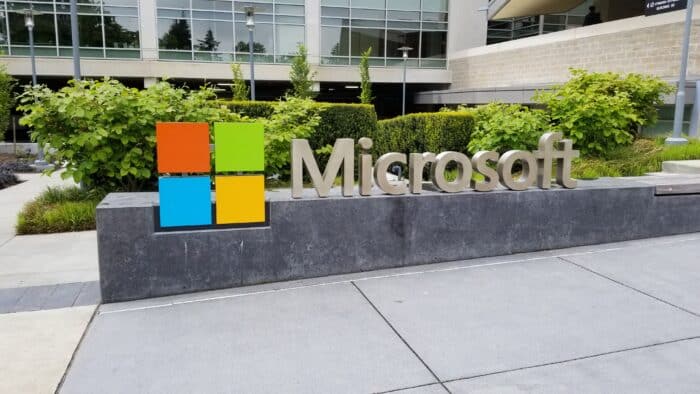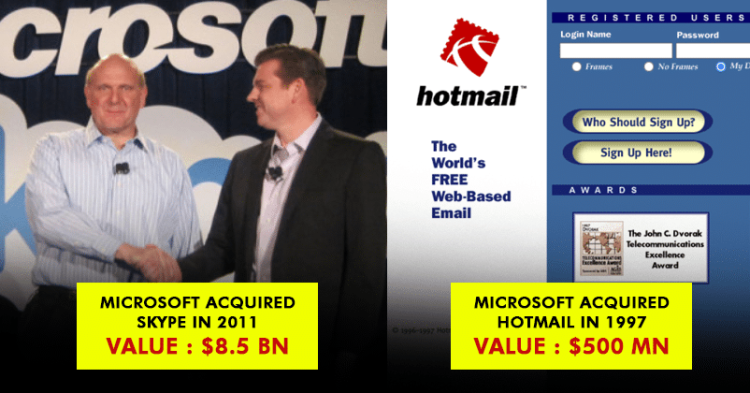Microsoft has acquired 202 companies and invested in 132 others. The purchases cost the corporation more than $ 180.63 billion. Microsoft has made investments in a variety of fields, including cybersecurity, corporate collaboration, PC and console gaming, and others.

Microsoft is an American public international company located in Redmond, Washington, USA, that develops, manufactures, licenses, and maintains a wide range of computing-related products and services through its numerous product divisions. Microsoft was founded on April 4, 1975, and initially create and distribute BASIC programmers for the Altair 8800. By the mid-1980s, MS-DOS had dominated the home computer software industry, followed either by the Microsoft Windows series of operating systems. Microsoft Office would also grow to command the office suite market.
In recent years, the firm has expanded into the video gaming sector with the Xbox, Xbox 360, Xbox One, and Xbox Series X, as well as the consumer devices and information over the internet market with Zune, MSN, as well as the Windows Phone OS.
On March 14, 1986, the business conducted its first public offering. The stock finally finished at $27.75 per share, having peaked at $29.25 immediately after the market began for trade. Microsoft’s market capitalization after the transaction was $519.777 million. Microsoft has since bought approximately 225 firms, purchased shares in 64 firms, and divested 25. 107 of the firms bought by Microsoft were situated in the U. S. Microsoft has not disclosed financial information for the majority of these acquisitions and mergers.
Microsoft has also acquired many holdings for over a billion dollars. It paid $1 billion for an 11.5% investment in Comcast, $2.263 billion for a 22.98% share in Telewest, and $5 billion for a 3% investment in AT&T. Only Expedia Group’s sale to USA Networks for $1.372 billion on February 5, 2002, was the most expensive of Microsoft’s divestitures, in which portions of the firm are transferred to another company.
Key Acquisitions
* On July 30, 1987, Microsoft made its first purchase, Forethought. Forethought was started in 1983 and created a presentation application
that became recognized as Microsoft PowerPoint.
* Microsoft paid $500 million for Hotmail.com on December 31, 1997, its greatest acquisition of the era, and merged Hotmail in with its MSN
set of services. Earlier that month, Hotmail, a free webmail service created in 1996 by Jack Smith and Sabeer Bhatia, had much more than
8.5 million customers.
* Microsoft paid $1.375 billion for Seattle-based Visio Corporation on January 7, 2000. Visio, a software firm, was formed as Axon
Corporation in 1990 and went public in November 1995. Visio, a diagramming application programme developed by the firm, was merged into
Microsoft’s line of products as Microsoft Visio.
* Microsoft paid $1.33 billion for Navision on July 12, 2002. The business that created the technology for Microsoft Dynamics NAV resource
planning software was absorbed by Microsoft as a new subsidiary called Microsoft Business Solutions, which was eventually renamed
Microsoft Dynamics.
* On August 13, 2007, Microsoft paid $6.333 billion for aQuantive, an advertising business. Before the purchase, aQuantive had ranked 14th
in the world when it came to revenue among advertising firms. At the time of the transaction, aQuantive had three subsidiaries: Avenue
A/Razorfish, one of the world’s leading digital agencies, Atlas Solutions, and DRIVE Performance Solutions. On April 25, 2008, Microsoft
paid $1.191 billion to acquire the Norwegian corporate resulting in the company Quick Search & Transmission improving its search
technology.
* Microsoft announced on May 10, 2011, that it had paid $8.5 billion to acquire Skype Technologies, the company behind the VoIP service
Skype. The transaction was Microsoft’s greatest acquisition at the time, valued 32 times more than Skype’s operating earnings. Skype will
become a part of Microsoft, with former Chief executive Tony Bates – the company’s first president — reporting to Microsoft’s CEO.
* In a transaction worth 3.79 billion euros, combined with the other 1.65 billion to license Nokia’s patent portfolio, Microsoft stated on
September 2, 2013, that it intended to buy Nokia’s mobile hardware division. Nokia and Microsoft had a long-standing cooperation to
create devices based on its Windows Phone platform. Steve Ballmer saw the acquisition as a “bold move into the future” with both firms,
owing to their recent partnerships. The transaction, which is expected to finalize in early 2014 assuming regulatory approval, excludes
the Here navigation service and Nokia Solutions & Networks, all of which will be maintained by Nokia. While the agreement was being
finalized, Microsoft exited its smartphone business & acquired the Nokia feature in May 2016.
* Microsoft paid $2.5 billion for Mojang in September 2014.
* On June 13, 2016, Microsoft introduced a $26.2 billion acquisition of professional networking site LinkedIn, which will be completed by
the end of 2016. The acquisition would preserve LinkedIn as a separate brand and keep its existing CEO, Jeff Weiner, in place, who would
then subject to Microsoft CEO Satya Nadella. The transaction was finalised by December 8, 2016.
* Microsoft paid $7.5 billion in Microsoft shares for the famous software repository site GitHub on June 4, 2018.
* Microsoft announced its intention to purchase Zenimax Media and all of its assets for $7.5 billion on September 21, 2020. The transaction
was completed on March 9, 2021.
* Microsoft paid $68.7 billion in cash to purchase Activision Blizzard, an American video game company owned, on January 18, 2022. It is
Microsoft’s greatest purchase to date, putting the business in third place in terms of sales.
Microsoft’s Most Expensive Acquisition Is A $69 Billion Bet On The Future Of Video Games
Microsoft announced on Tuesday a deal to buy legendary but scandal-plagued video game developer Activision Blizzard for $68.7 billion cash, the strongest indication yet from the company’s aspirations to become a gaming behemoth.
It’s a vertical merger that would combine the publishers for “Call of Duty,” “World of Warcraft,” and “Candy Crush” into a lineup that already contains Xbox, the Game Pass subscription network, and a slew of best-selling titles. Given the scale of the deal and Microsoft’s standing as a corporate powerhouse, the move may catch the eye of antitrust regulators.
















